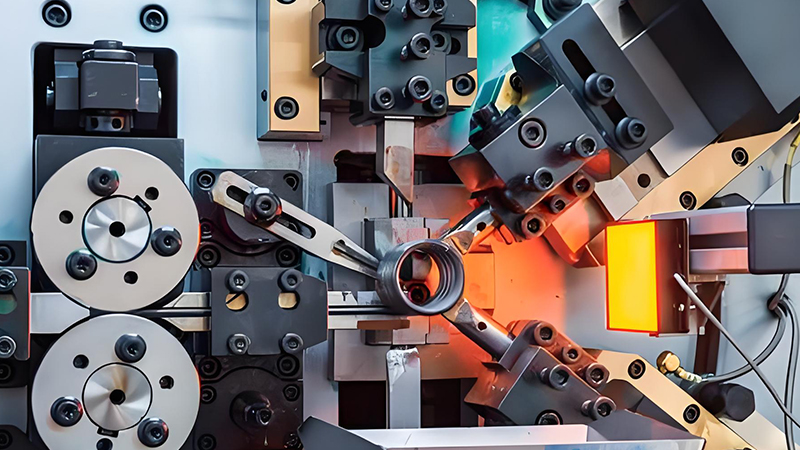Related Products
The main functions of springs
major function
① Control the movement of machinery, such as valve springs in internal combustion engines, control springs in clutches, etc Absorb vibration and impact energy, such as buffer springs under cars and train carriages, and vibration absorbing springs in couplings Store and output energy as power, such as clock springs, springs in firearms, etc. ④ Used as a force measuring element, such as a spring in a force measuring device or spring scale. The ratio of load to deformation of a spring is called spring stiffness, and the greater the stiffness, the harder the spring. Springs are widely used elastic components in the mechanical and electronic industries. When loaded, springs can generate significant elastic deformation, converting mechanical work or kinetic energy into deformation energy. After unloading, the deformation of the spring disappears and returns to its original state, converting deformation energy into mechanical work or kinetic energy.
Measurement function
We know that within the elastic limit, the elongation (or contraction) of the spring is directly proportional to the external force. Make a spring scale by utilizing the property of springs.
Reset function
The spring undergoes deformation under external force, and after removing the external force, the spring can return to its original state. Many tools and equipment use the property of springs to reset. For example, many building doors have reset springs installed on their hinges. When people enter or exit, the doors will automatically reset. People also use this function to make items such as automatic umbrellas and automatic pencils, which are very convenient. In addition, various buttons and buttons also require reset springs.
Driving function
Mechanical clocks and clockwork toys are driven by tightening the spring. When the spring is tightened, it undergoes bending deformation and stores a certain amount of elastic potential energy. After release, the elastic potential energy is converted into kinetic energy, which is driven to rotate through a transmission device. Toy guns, starting guns, and military firearms also work using one of the properties of springs.
Buffer function
A spring is installed between the locomotive and car frame and the wheels, which uses the elasticity of the spring to slow down the bumps of the vehicle.
Voice production function
When air flows through the spring holes in harmonica and accordion, it impacts the reeds, causing them to vibrate and produce sound.
Compression function
Observing various electrical switches, it can be found that one of the two contacts of the switch must be equipped with a spring to ensure close contact between the two contacts and good conductivity. If the contact is poor, the resistance at the contact will increase, the heat generated when the current passes through will increase, and in severe cases, the metal at the contact will melt. The two metal pillars of the bayonet lamp head are both equipped with springs for good contact; As for the central metal plate of the screw head and the metal plates for all socket connectors, they are all spring plates, which function to ensure close contact between the two sides and maintain good quality. In a cassette tape, there is a phosphor bronze spring that uses the elastic force generated by its bending deformation to make the magnetic head in close contact with the tape. There is a long spiral spring in the stapler, which serves to tighten the staples on one hand, and on the other hand, when the front nails are pushed out, the back nails can be sent to the front for comfortable pushing out. This way, the nails can be automatically pushed to the front until they are all pushed out. Many machines automatically feed, and the automatic loading of bullets in automatic rifles relies on the function of springs. In addition, clips such as clothes clips, ballpoint pens, and the clip on the pen case all use the compression function of springs to clamp onto the clothes.












